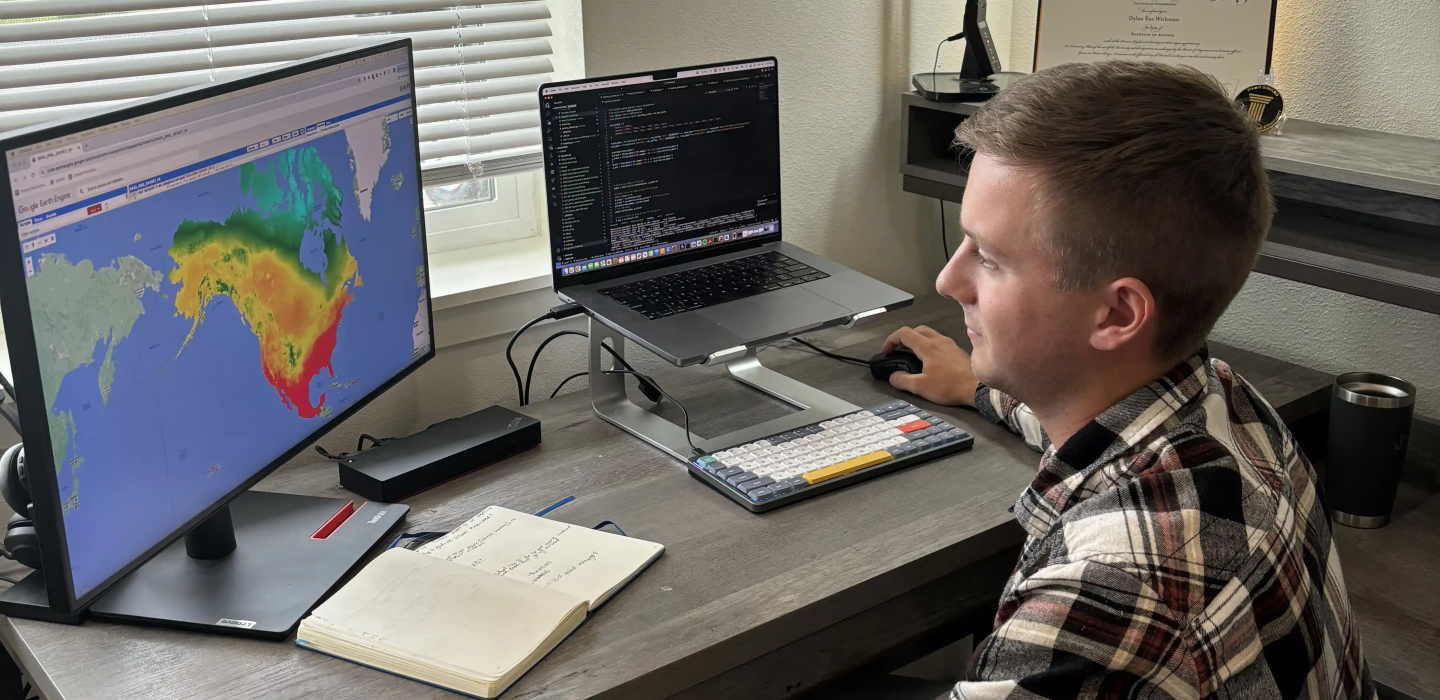
LSU Professor, Students Use AI to Track, Predict Wildfires
In the last 30 years, the number of yearly wildfires nationwide has steadily declined according to the Congressional Research Service — but the acreage burned has steadily increased, with the vast majority typically originating in just a few catastrophic blazes. That makes predicting which fires will “blow up” a growing challenge, especially as the nature of fires evolves with new building standards, technology and climate change.
Louisiana State University (LSU) Professor Supratik Mukhopadhyay and a team of students are using artificial intelligence to help. Their AI-based system, DeepFire, tracks wildfires at every stage. It can predict where a blaze will occur, detect a new fire quickly and forecast its behavior as it grows.
DeepFire uses AI to analyze data on a number of fire risk factors — previous wildfires, weather, lightning strikes, land cover, vegetation — to predict if a wildfire will hit a specific area in the next few days, creating heat maps of fire-prone areas. Then, another AI arm of the operation working with long-range cameras uses the map to focus on high risk areas and detect fires quickly.
According to an April news release from LSU, DeepFire can detect 8 out of 10 simulated smokes with zero false alarms. The team used 50,000 images of smoke and fire to train DeepFire’s detection system so it can distinguish between smoke and clouds, and recognize the various shapes that smoke takes.
“Our system combines a prediction system, a detection system, and a spread modeling system that cooperate with each other,” Mukhopadhyay said in the release. “This enables us to pinpoint our detection system to areas that are predicted to have a high risk of wildfire and deploy resources accordingly.”
Two recent LSU graduates, Dylan Wichman and Robert DiBiano, did the “main work” on the project, Mukhopadhyay said, with Wichman leading the prediction model and DiBiano leading the detection model.
DeepFire is one of 20 teams focused on wildfire detection technology that are competing for a $3.5 million first place prize in the global XPRIZE Wildfire contest. In the final testing round of the competition, “teams will have one minute to accurately detect all fires across a landscape larger than entire states or countries, and 10 minutes to precisely characterize and report data with the least false positives to decision-makers on the ground,” the XPRIZE website said.
The DeepFire team advanced to the next round of the competition in April, which brought them $37,500 in prize money, according to the news release. The final round of competition will happen in April 2025.
As wildfires grow more common and more intense, agencies are increasingly turning to technology and data to help.
The U.S. Fire Administration has created the National Emergency Response Information System, which is set for national rollout this fall. It uses machine learning to find patterns in national emergency response data and evaluate fire risk. In California, the state Air Resources Board is using AI to address one of the effects of wildfires. Officials created an interactive map of Clean Air Centers, where residents can go for filtered air during emergencies.


Average Rating